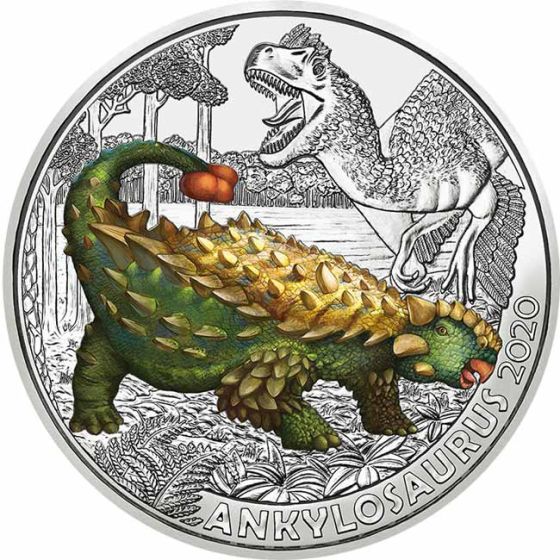Delivery date: Immediate
SKU
01520007
2020 Austria Copper-Nickel 2020 Austria Copper-Nickel Ankylosaurus Magniventris PN PN
Tax:
0%
* excl. shipping
Annotation:
The images displayed are iconic photos.
This product is NOT subject to the right of withdrawal.
| SKU | 01520007 |
|---|---|
| Description | 4 – loose |
| Condition | Newly minted |
| Face Value | EUR 3 |
| Country | Austria |
| Weight (g) | 20.000000 |
| Fine Weight (g) | 0.000000 |
| Material | Copper-Nickel |
| Diameter (mm) | 34 |
| Condition | PN |
| Mintage | 65000 |
| Issue Date | 09.09.2020 |
| Delivery date | Immediate |
Behold the bright and colorful series from the Austrian Mint - Supersaurs! This series brings prehistoric giants back to life in the shape of 12 superb glow-in-the-dark coins.
Coin Highlights:
Cupro-Nickel composition.
Individual coins are packaged in protective packaging.
Mintage of 50,000 coins.
Obverse: Displays a collage of the 12 dinosaurs to be recognized in the series along with the unique €3 denomination.
Reverse: Features a color-printed Ankylosaurus featuring glow-in-the-dark technology.
Guaranteed by the Austrian Mint.
Protect your Colorful Supersaurs coin by adding this capsule to your order.
Add this 2020 Austria Cupro-Nickel €3 Colorful Supersaurs Ankylosaurus coin to your cart today!
Given just how tough the armored ankylosaurus magniventris was, it is not surprising that this massive herbivore was one of the last large non-avian dinosaurs to roam the earth. Looking like a four-legged tank with a broad torso covered in humps, spines and protected by a bone-plated corset, not to mention horns pointing backwards from the back of its head, ankylosaurus magniventris is brought to life in vivid detail on the fourth colored coin in the Supersaurs series.
Only appearing a couple of million years before the extinction of non-flying dinosaurs, at the end of the cretaceous period some 68–66 million years ago, ankylosaurus magniventris measured 9 meters in length and weighed around 3.5 tons. Needing to eat up to 60 kg of food per day, the dinosaur thus had little time for anything else. This has led some experts to speculate that the beast’s extraordinarily wide belly – hence ‘magniventris’ – accommodated a digestive system that was able to process food in several stages.

